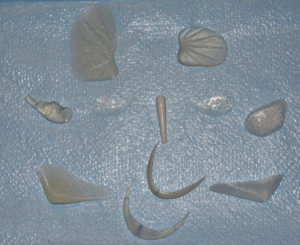Chin, Cheek, and Jaw Implants for Facial Augmentation

Enhancing the chin with an implant is the most commonly performed facial implant procedure. With a small incision under the chin, a chin implant can be easily put into place, bringing the chin forward so that it is in balance to the nose and lips. Unlike the old style ‘button’ chin implant, there are many different styles of chin implants today. From curved styles to a more box shape, to those chin implants with a central dimple, there are many options to custom tailor a chin implant to fit most patient’s faces. Usually the chin implant is sutured into place, a metal screw can be driven through the implant to the bone. This screw fixation method can eliminate one of the very few complications of chin implants, that of shifting or changing position after surgery causing chin asymmetry. Chin implants are commonly in conjunction with other facial procedures including rhinoplasty, neck liposuction, and facelifts.
Cheek implants also have a variety of styles, allowing fullness to be gained over the prominence of the cheekbone, filling out the hollow underneath the cheekbone, or allowing more fullness to be gained up to the side of the nose. By going through the mouth under the upper lip, there is no facial scarring. Cheek implants help bring fullness to a flat cheeks, help camouflage a prominent nose, or restore facial fat atrophy lost in HIV disease. Metal screw fixation seems to be of particular importance as the cheek implant is really sitting ‘on the side of the cliff’ so to speak and, therefore, is more prone to the risk of moving out of place after surgery.
Jaw implants of the mandibular (jaw) angle are relatively new. Jaw implants are designed to ‘square’ the face at the jaw angle for a more masculine look or to correct facial asymmetry if jaw development is different between the two sides of the face. Swelling and recovery after jaw angle implant placement is greater than with chin and cheek implants as the big chewing muscles must be lifted up to put the jaw angle implant in place. This causes some soreness in opening the mouth for several weeks after surgery.
In some cases, the use of different implants in the same patient, such as a chin and jaw angle implants in a male, can provide dramatic changes in one’s facial appearance. Facial implants are a powerful tool, that is simple and usually uncomplicated, to achieve facial enhancement.
Dr Barry Eppley
Indianapolis, Indiana


